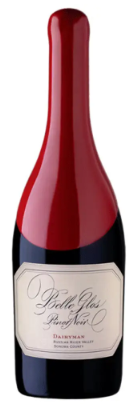2018 Walt Pinot Noir Clos Pepe
$63.90
Out of stock
2018 Walt Pinot Noir Clos Pepe
2018 Walt Pinot Noir Clos Pepe The palate opens to a beautifully rich and lush texture laced with hints of salinity – a distinguishing characteristic of the site. The minerality and warm, spicy character of the vineyard is brought forward by fermentation in concrete tank and whole cluster fermentation.
Pinot Noir
Pinot Noir is the dominant red wine grape of Burgundy, now adopted (and extensively studied) in wine regions all over the world. The variety’s elusive charm has carried it to all manner of vineyards.
These extend from western Germany (as Spätburgunder) and northern Italy to Chile, South Africa, Australia, New Zealand and the USA. California, Oregon and New Zealand are arguably the greatest centers for the grape outside its home territory. However great Pinot Noir is made in all of these territories.
The essence of Pinot Noir wine is its aroma of red berries and cherry (fresh red cherries in lighter wines and stewed black cherries in weightier examples). Many of the more complex examples show hints of forest floor. Well-built Pinot Noirs, particularly from warmer harvests, suggest leather and violets, sometimes recalling Syrah.
There are two theories regarding the Pinot name. One is that it came about because their bunches are similar in shape to a pine cone (pinot in French).
It may derive, however, from a place name in France such as Pinos or Pignols from where cuttings were obtained. Pignols in the Auvergne, for example, has cultivated Pinot since the Middle Ages.
It was previously believed that Pinot Noir, Pinot Blanc, Pinot Gris, Pinot Meunier, Pinot Précoce (Frühburgunder) et al were members of a “”Pinot Family”” of distinct grape varieties. But DNA profiling has shown them to share the same genetic fingerprint. Thus, they should properly be considered as mutations or clones of a common variety.
Related products
Wines!
Pinot Noir
94pts WE SAVE 33%




